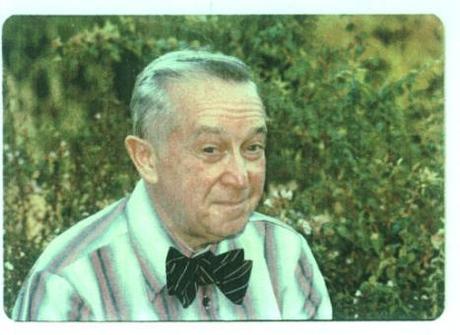 Irwin Stone. (Image by Oscar Falconi)
Irwin Stone. (Image by Oscar Falconi)[Part 2 of 10]
“I have decided, on the basis of the evidence presented by Irwin Stone, that there is very strong evidence now, that most human beings are suffering from hypoascorbemia, a mild sort of deficiency of ascorbic acid in the blood; perhaps it is wrong for me to call it a mild sort. The point that I call to your attention is that I believe that for all or almost all human beings, the amount of vitamin C that is contained in the food is less that the optimum amount, and that the state of health of almost all human beings is not so good as it would be if they were to ingest a larger amount.”
-Linus Pauling, speech to the American Schizophrenia Association, July 1971.
Linus Pauling’s chance encounter with the work of Abram Hoffer and Humphry Osmond convinced him that metabolic diseases could be treated by megadosing with certain vitamins; a practice that he labeled “orthomolecular medicine.” As Pauling’s interest in the topic grew, he sought out as much of the existing scientific literature as he could find, and quickly began to see a pattern.
As early as the 1940s, there seemed to be evidence of a positive correlation between increased niacin intake and improvement of certain psychoses in patients. The literature also supported Hoffer and Osmond’s finding that vitamin megadosing was not likely to cause significant side effects. On the contrary, many of the era’s commonly prescribed anti-psychotic drugs often caused severe side effects, sometimes even at low doses. The benefit of this new alternative was made clear by Osmond in a 1970 letter to Pauling, in which he noted that
[we are] dealing with a set of highly physiologically active substances [such as niacin] which do not, however, seem to produce the sort of danger which one finds in most physiologically active substances.
Though Pauling was convinced that orthomolecular therapy was effective, his continuing review of the literature cast doubt on whether or not niacin was, in fact, the most effective vitamin to use in treating patients with psychoses, such as schizophrenia. Though niacin was clearly safe, certain investigators had reported marginal success rates with their patients. Enough data of this sort had been reported to lead Pauling away from niacin and in the direction of a new vitamin. It was here that Irwin Stone entered his life.
In March 1966, Pauling traveled to New York to accept an award from the Carl Neuberg Society for International Scientific Relations. In his speech, Pauling – then sixty-five years old – expressed hope that he might live for another twenty years, so that he might witness the scientific advances that he believed to be forthcoming. Irwin Stone, a biochemist who worked mostly in the brewing industry, was in the audience that evening, and he felt as though he could virtually guarantee another twenty years or more for Pauling.
In a letter that he wrote after the speech, Stone told Pauling about research that he had been conducting on the health effects of vitamin C, stressing that he had been megadosing with the vitamin for the past few years and was healthier than ever as a result. In relaying this, Stone acknowledged that the story seemed implausible and admitted that he had remained a bit skeptical himself until he was involved in a car accident. Buoyed by his high dose vitamin C regimen, Stone recovered from the incident far faster than he or his doctors believed possible, and from then on he had been convinced. In Stone’s view, vitamin C would easily buy Pauling another twenty years, and maybe up to fifty!
When Stone sent his letter, he could not have known that Pauling was hatching his own interest in orthomolecular medicine; Pauling’s first paper on the subject did not appear until a year later. As such, Pauling knew that Stone’s testimony was not informed or biased by previous knowledge of his work. The letter did, however, add to Pauling’s growing belief in power of high dose supplementation in the treatment of disease. Likewise, Pauling had also been given a new model that he might explore for mental illness in lieu of the niacin trials conducted by Hoffer, Osmond and others. The next step then, was to see how effective megadoses of vitamin C might be for patients suffering from schizophrenia.
